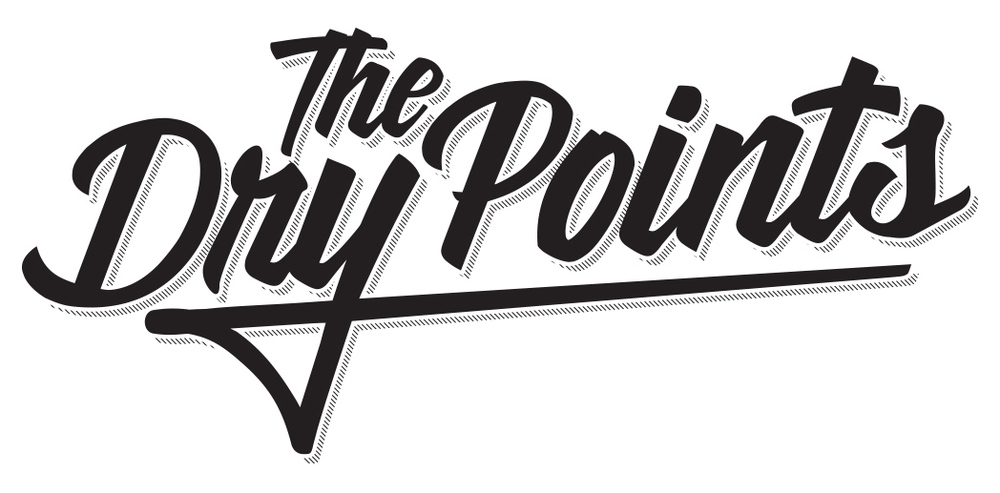The Dry Points meet at the studio for weekly band practice. Each week's mood fluctuates between raucous hilarity, quiet concentration, assembly line efficiency, and irreverent zeal.
The starting prints are high-resolution enlargements of steel engraved portraits from The History of Milwaukee, from its First Settlement to the Year 1895, edited by Howard Louis Conard. Each member approaches a blank portrait and embellishes it using photocopies printed via acetone transfer on a 30 x 50 Charles Brand Etching Press.
We go over our progress at the beginning and end of each practice. During our review, we recognize the emerging themes, color, composition, and associations in each print. We recognize the portions of the work that make us uncomfortable and brainstorm solutions for the next session.
We don't believe in mistakes in the mark-making process. Each mark, however divergent, is a spark for the next band member's move. At times it's a sensical continuation, while at others, it spins the print into a completely opposite direction. If an impasse is reached by an individual, the print will be passed to another member, be reviewed by the whole band for next moves, or set aside for a later date.
We have no restrictions on what types of marks can be made. Members share what they plan to do, and the rest of the band gives art direction and suggestions. Most of our marks are based in printmaking techniques, but we deviate into other mediums as the piece requires.
Here is a partial list of some of the techniques:
- carbon paper transfers
- charcoal , graphite pencil
- cherry stains
- coffee and tea staining
- direct collage and montage
- frisket paper cut outs
- gold leaf
- graphite rubbings from found relief objects
- hand drawing- direct
- ink transfer drawings
- intaglio ink palette transfers
- letterpress with wood type
- linoleum block prints
- magic markers
- mono printing
- Montana spray paint with acetone removal
- mulberry stains
- paint markers
- pen and ink drawing
- Prisma colored pencils
- rubber stamps
- stenciling
- wax resist, oil varnish resist
- Xerox transfer with acetone
- Xerox transfer on rice paper collage
- glitter
The portraits are printed by an Epson 9900 Stylus Pro on 300 gram textured fine art paper or hot press natural paper via Archival. Prints average 5 passes through the press, sometimes many more. Each print has been handled at least 100 times over the course of the year.
